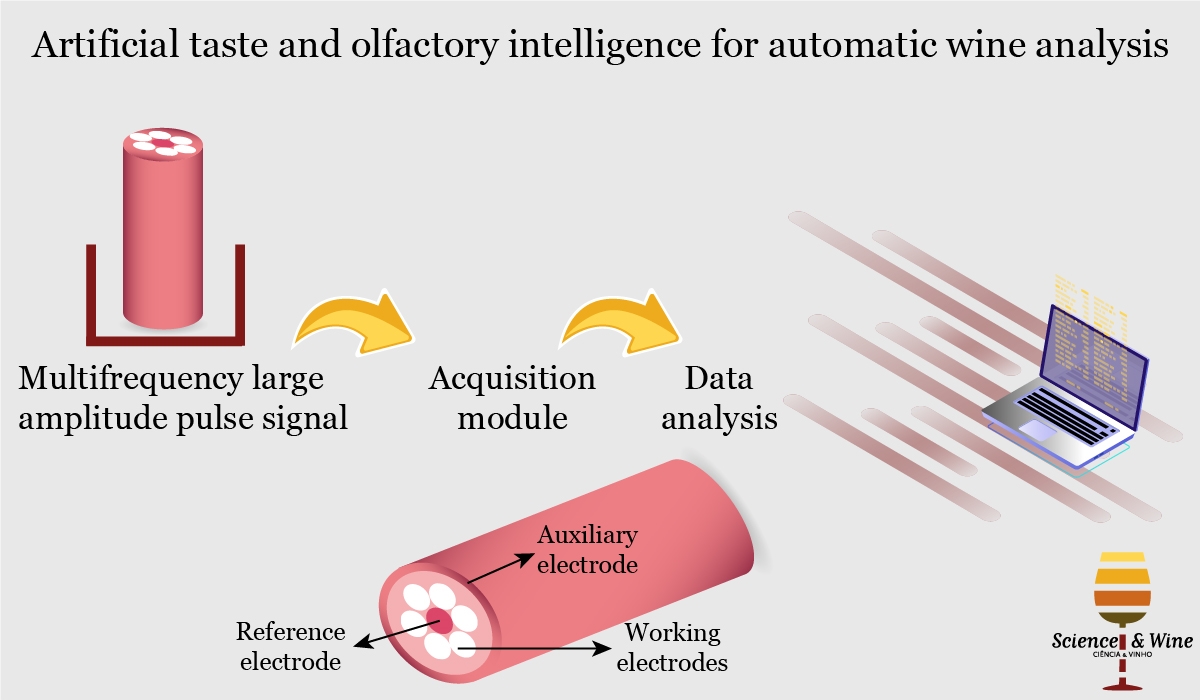By Lei Zhang
Taste and olfactory are the important biological sensory organs, which play a vital role in our life. In many areas, human experts have been trained with high-level taste and olfactory perceptron for wine and tea tasting, who can help improve the quality of wine and tea. In recent years, electronic tongue (E-Tongue), as a kind of promising bionic system for five basic biological tastes including sourness, saltiness, bitterness, sweetness and umami, is playing an increasingly important role in automatic wine, tea, food and pharmaceutical assessment, etc. (Tahara and Toko, 2013). The first type of voltammetric E-Tongue proposed by Winquist et al. 1997 employed an array of noble metal working electrodes with small amplitude pulse voltammetry (SAPV) or large amplitude pulse voltammetry (LAPV). Tian et al. 2007 developed a voltammetric E-Tongue system by combining working electrodes with multifrequency large amplitude pulse. A general E-Tongue is actually a multi-sensor system, comprising of an array of nonspecific, low selective and high cross-sensitive sensors, and a multivariate data analysis module.
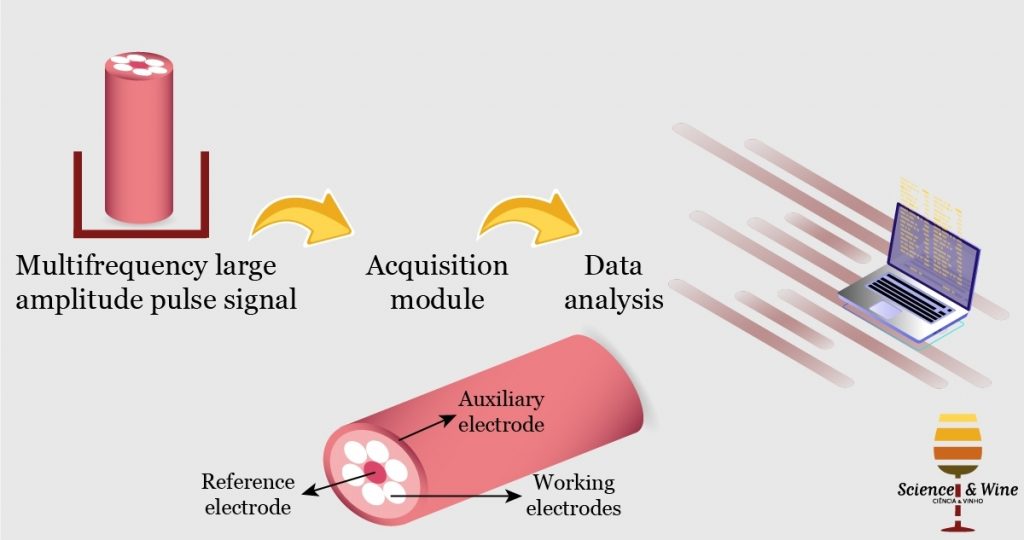
Electronic olfactory system constructed with a model nose was proposed for the first time to mimic the biological olfactory mechanism as early as in 1982 (Persaud and Dodd, 1982), which presented two key assumptions of mammalian olfactory system: (1) there is no requirement for odour-specific transducers; (2) odor signals from the transducers can be learnt. One key characteristic of model nose is that the odorant detectors (i.e. the primary neurons) respond to a wide range of chemicals. In 1994, Gardner et al. (Gardner and Bartlett, 1994) showed a new definition for artificial olfactory system: “An electronic nose (E-Nose) is an instrument, which comprises an array of chemical sensors with partial specificity and an appropriate pattern recognition system, capable of recognizing simple or complex odours”. The bionic techniques of E-Tongue and E-Nose have been widely used in wine analysis and achieved acceptable precision (Cetó et al. 2016; Varnamkhasti et al. 2011).
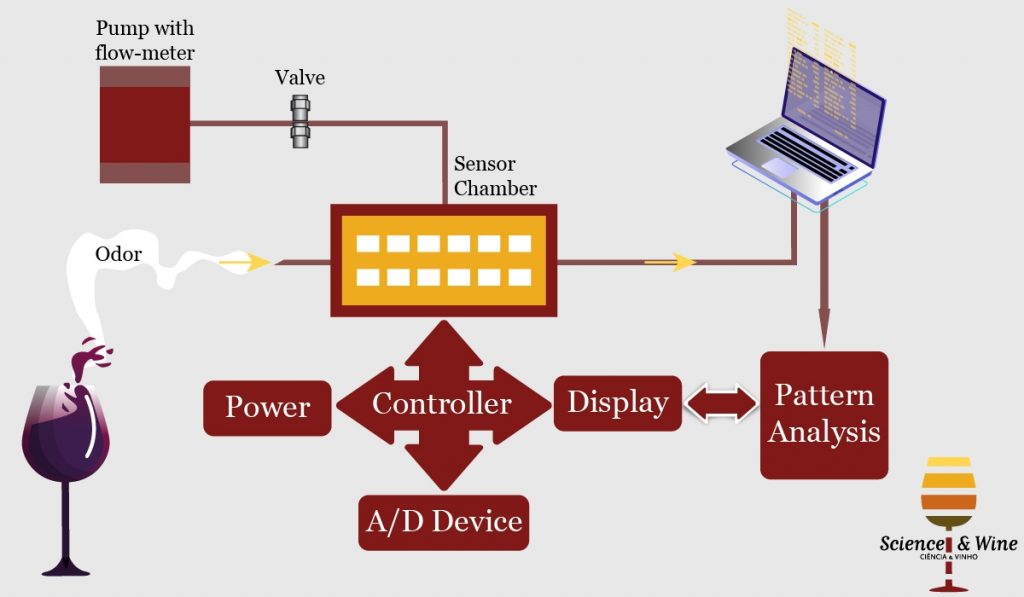
In our group, a long-term research on E-Nose and E-Tongue technique for developing intelligent systems toward automatic analysis and recognition of odor and liquid by using machine learning and pattern recognition models has been employed (Zhang et al. 2017; Zhang and Zhang, 2017; Zhang et al. 2018). A detailed description of the developed E-Tongue for automatic tea, wine and drink analysis is presented (Zhang et al. 2018).
(1) System development. The E-Tongue system developed in our lab is based on the MLAPV (multi-frequency large amplitude pulse voltammetry) principle. The experimental platform includes E-Tongue system, personal computer (PC), and electrochemical cell. The pulse signal excitation and acquisition modules are controlled by a microcontroller unit. The response (perception) signal (output) is then transmitted to the computer by a blue-tooth module. The sensing module includes five working electrodes, such as gold, platinum, palladium, tungsten and silver, one auxiliary electrode (pillar platinum) and one reference electrode (Ag/AgCl). MLAPV is adopted as the measuring technique. The pulse signal (excitation) comprises of three individual frequencies: 1 Hz, 3 Hz and 5 Hz, and five amplitudes of voltage: 4.10V, 3.85V, 3.60V, 3.35 and 3.10V for each frequency.
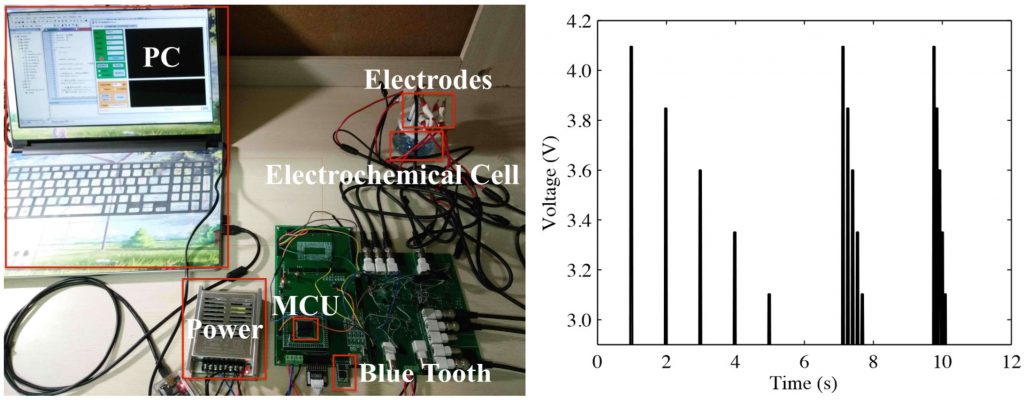
(2) Dataset development. The data measurement process includes sample preparation, signal perception, signal acquisition and electrodes cleaning. All the measurements were performed at room temperature (25 ± 1 Celsius) and the electrochemical cell was exposed to ambient air without any treatment. Each liquid sample is measured by the E-Tongue system with 5 electrode sensors. For each sensor, 2050 points are observed, and results in a 5 × 2050 data matrix for each observation. For further denoising, a sliding window based smooth filter is considered. The signal fragments with respect to three frequencies are self-contained, with each frequency five sub-pluses of different amplitudes are shown. For feature selection, the maximum and minimum values in the 1st filtered sub-pluse are extracted. Therefore, 5×2×3×5 = 30×5 = 150 points are extracted as features for each sample. Totally, 114 samples of 13 kinds of liquid including beer, red wine, white spirit, black tea, Mao Feng tea, Pu’er tea, oolong tea, coffee, milk, cola, vinegar, medicine and salt are acquired in the developed dataset for E-Tongue research in algorithms.
(3) Algorithm development. The multivariate data analysis module is composed of data processing, analysis and recognition. Generally, due to the random perturbation of electronic devices, the acquired sensing data usually contains noise and distortion, that causes clutter background and inseparability. In data analysis and recognition, a local discriminant preservation projection (LDPP) model is used for feature representation and support vector machine is used as classifier. The LDPP pursues neighborhood structure preservation and local discrimination. The former inherits the manifold assumption that neighbor data points are with similar labels and tends to find a low-dimensional affinity structure embedded in the raw data space. The latter aims to enhance the local discriminative property which is not sensitive to implicit outliers. The model is motivated by two intuitions: geometric intuition and attribution intuition. Geometric intuition is that if the interior data can be distinguished well, exterior data should be naturally distinguished. Attribution intuition is that exterior data has a higher probability to be abnormal or outlier data. Therefore, we modify the Fisher criterion by imposing locality constraint which is important for small sized E-Tongue data. Additionally, manifold regularization is also used for local similarity preservation.
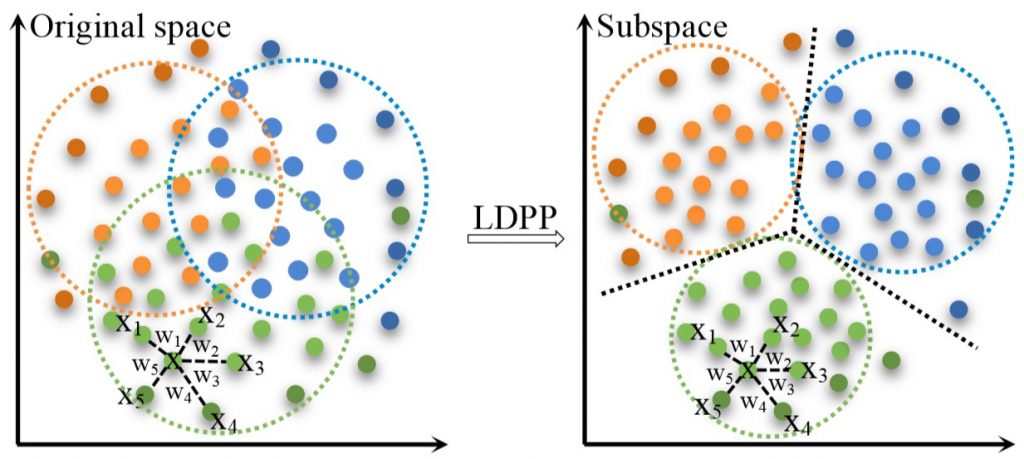
(4) Evaluation test. After training of the feature representation and classifier by using 5-folds cross-validation strategy, the testing recognition accuracy using a number of algorithms are tested. 4 folds are used as training set and the remaining 1 fold is used as test set. The average recognition performance of 13 analytes achieves 98%. A number of research has fully confirmed that bionic E-Tongue can be used in industrial quality control, food quality analysis, etc.
I do believe that E-Tongue and E-Nose will be an optimistic start for revealing the biological taste and olfactory mechanism in the course of development of world artificial intelligence.
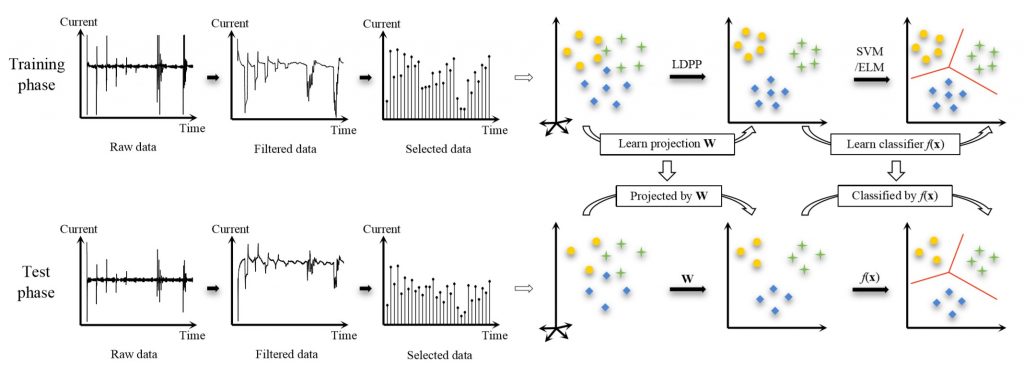
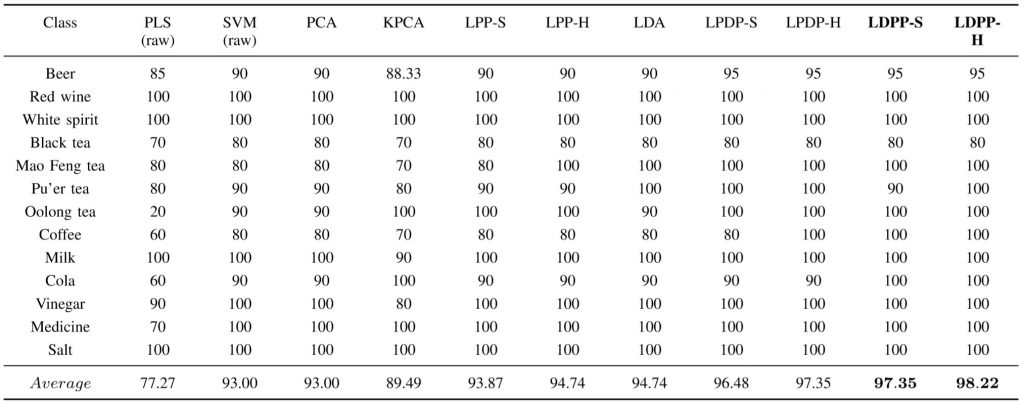
Those interested in a longer length report can download the working paper at:
https://ieeexplore.ieee.org/abstract/document/8262615

Lei Zhang received his Ph.D degree in Electronic Science and Technology from the College of Communication Engineering, Chongqing University, Chongqing, China, in 2013. From 06/2013 to 08/2013, he worked as a research associate in Tsinghua University (Shenzhen). From 08/2013 to 10/2013, he worked as a research associate in Harbin Institute of Technology (Shenzhen). He was selected as a Hong Kong Scholar in China in 2013, and then worked as a Post-Doctoral Fellow with The Hong Kong Polytechnic University, Hong Kong, from 10/2013 to 09/2015. From 12/2017 to 05/2018, he worked as a visiting professor in University of Macau. Since 10/2015, he is currently a Professor and Distinguished Research Fellow with Chongqing University. He is now the deputy director of Chongqing Key Laboratory of Bio-perception & Intelligent Information Processing, and he is also the founder and head of Learning Intelligence & Vision Essential (LiVE) Group. He is an IEEE Senior Member. His research interests focus on machine learning, pattern recognition, computer vision, bionic intelligence and intelligent systems. He has authored more than 70 scientific papers in many top journals including IEEE Transactions journals (e.g. T-NNLS, T-IP, T-CYB, T-MM, T-SMCA, T-IM), Information Sciences, Information Fusion, Neurocomputing, Expert Systems with Applications, and Cognitive Computation, etc. Also, 3 papers are selected as ESI Highly Cited Papers and 2 papers are selected as ESI Hot Papers. He is a recipient of the Best Paper Award in CCBR2017, the Outstanding Paper Award by Chongqing Association in Science and Technology in 2017, the Outstanding Reviewer Award of Sensor Review Journal in 2016, Outstanding Doctoral Dissertation Award of Chongqing, China, in 2015, Hong Kong Scholar Award in 2014, Academy Award for Youth Innovation of Chongqing University in 2013 and the New Academic Researcher Award for Doctoral Candidates from the Ministry of Education, China, in 2012. More info at http://www.leizhang.tk
References:
- Tahara and K. Toko. Electronic Tongues—A Review. IEEE Sensors Journal, vol. 13, no. 8, 2013.
- Winquist, P. Wide, and I. Lundström. An electronic tongue based on voltammetry. Analytica Chimica Acta, vol. 357, no. 1-2, pp. 21-31, 1997.
- S.Y. Tian, S.P. Deng, and Z.X. Chen. Multifrequency large amplitude pulse voltammetry: A novel electrochemical method for electronic tongue. Sensors and Actuators B: Chemical, vol. 123, no. 2, pp. 1049-1056, 2007.
- Persaud and G. Dodd. Analysis of discrimination mechanisms in the mammalian olfactory system using a model nose. Nature, vol. 299, pp. 352-355, 1982.
- J.W. Gardner and P.N. Bartlett. A Brief History of Electronic Noses. Sensors and Actuators B: Chemical, vol. 18-19, no. 1, pp. 210-211, 1994.
- Cetó, A. González-Calabuig, N. Crespo, S. Pérez, J. Capdevila, A. Puig-Pujol, and M.D. Valle. Electronic tongues to assess wine sensory descriptors. Talanta, vol. 162, pp. 218-224, 2016.
- M.G. Varnamkhasti, S.S. Mohtasebi, M. Siadat, J. Lozano, H. Ahmadi, S.H. Razavi, A. Dicko. Aging fingerprint characterization of beer using electronic nose. Sensors and Actuators B: Chemical, vol. 159, no. 1, pp. 51-59, 2011.
- Zhang, Y. Liu and P. Deng. Odor Recognition in Multiple E-nose Systems with Cross-domain Discriminative Subspace Learning. IEEE Trans. Instrumentation and Measurement, vol. 66, no. 7, pp. 1679-1692, 2017.
- Zhang and D. Zhang. Efficient Solutions for Discreteness, Drift, and Disturbance (3D) in Electronic Olfaction. IEEE Trans. Systems, Man, and Cybernetics: Systems, vol. 48, no. 2, pp. 242-254, 2017.
- Zhang, X. Wang, G.B. Huang, T. Liu, and X. Tan. Taste Recognition in E-Tongue using Local Discriminant Preservation Projection. IEEE Trans. Cybernetics, in press, 2018.

